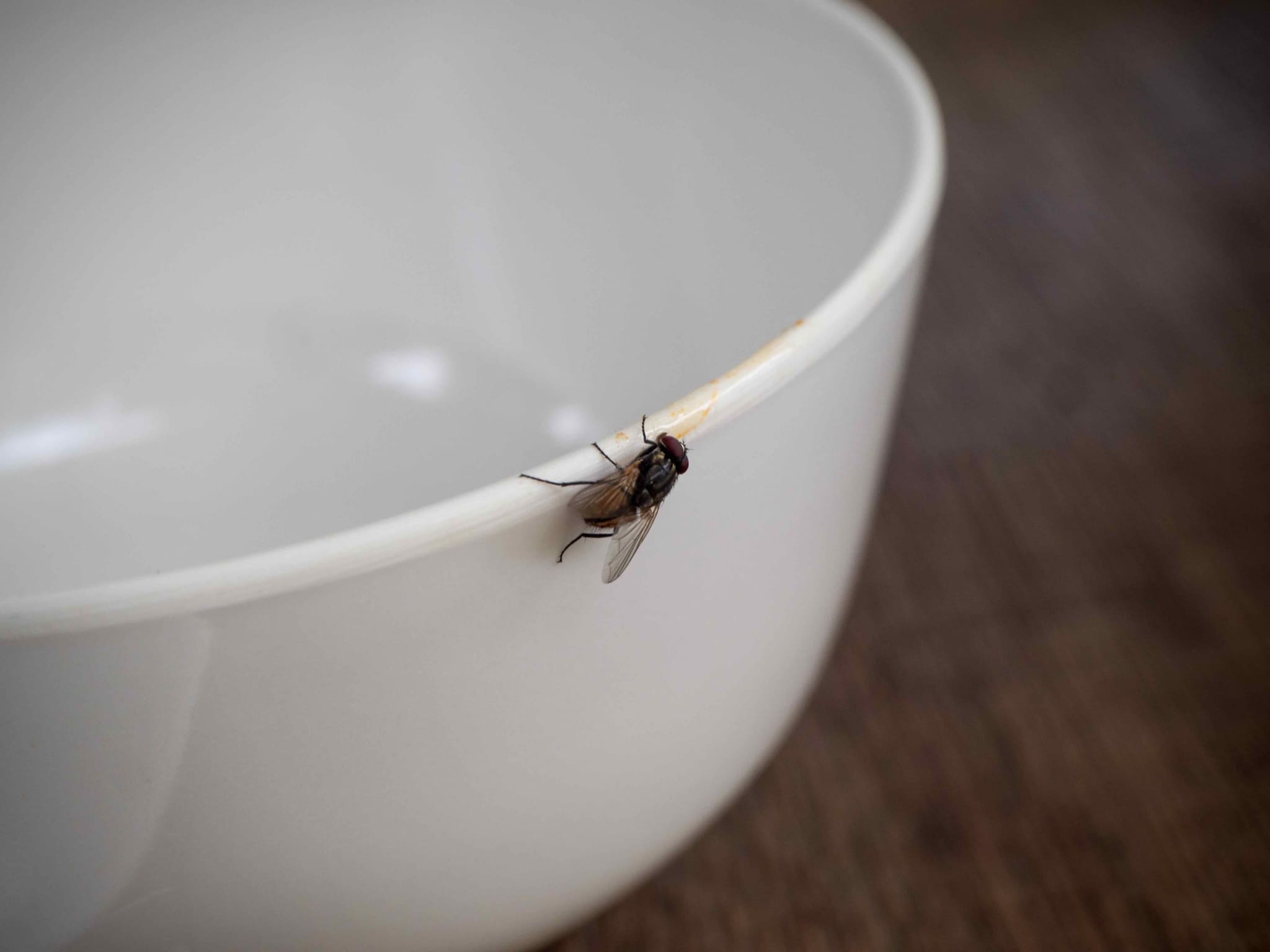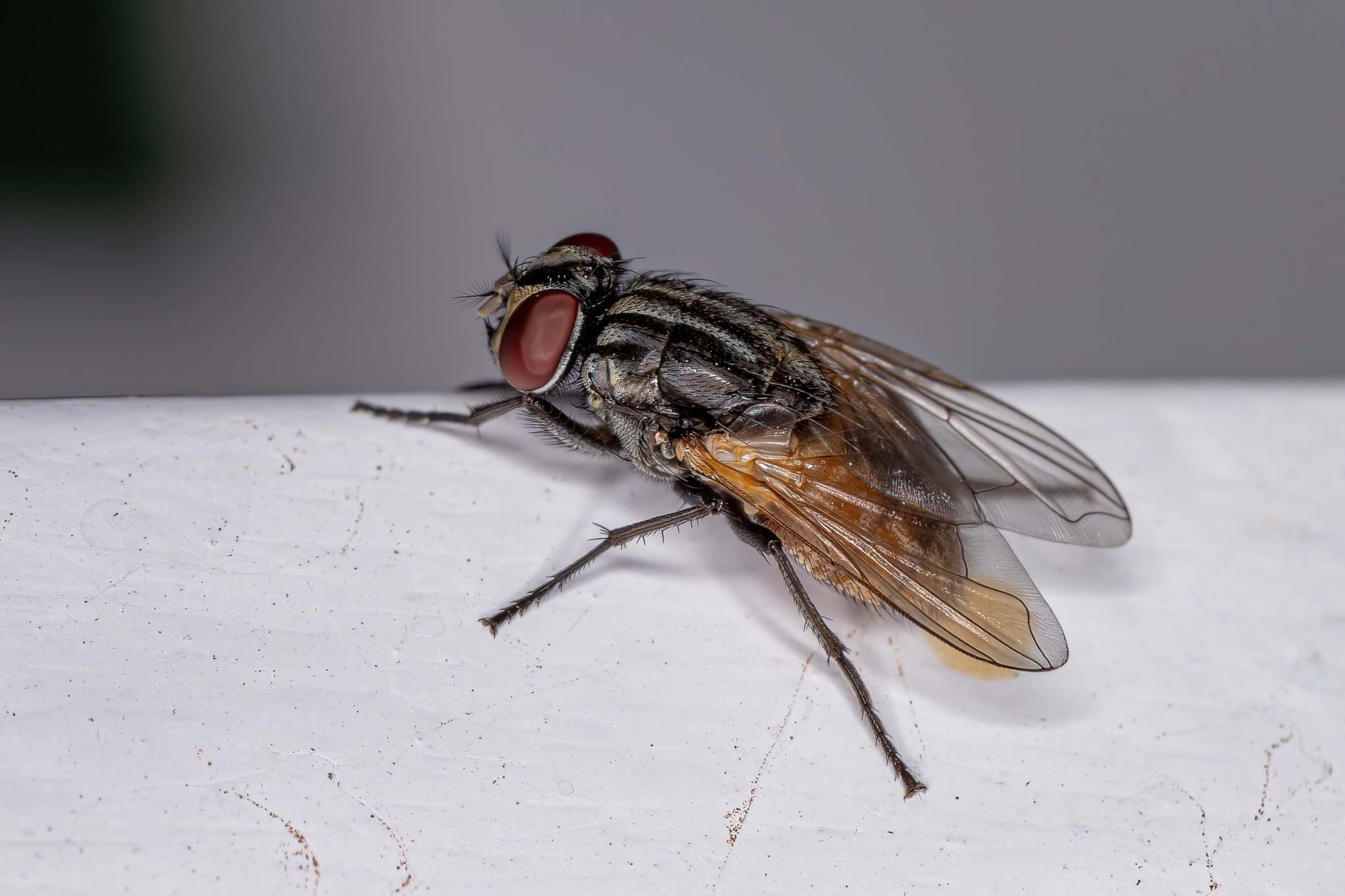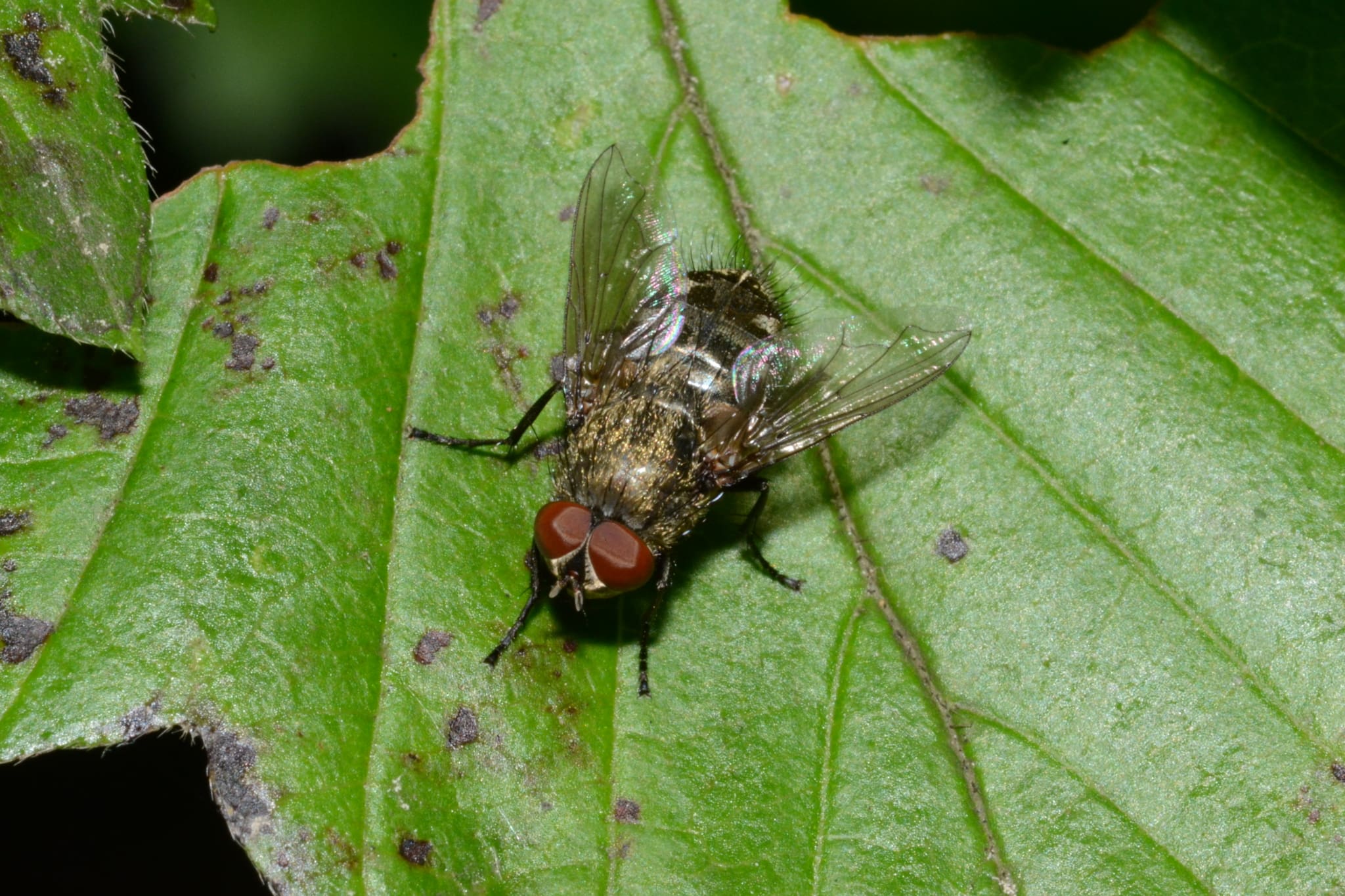Cluster Flies Vs House Flies: How To Spot The Difference
Washington is known as the Evergreen State due to its many evergreen forests. Similarly, Oregon is home to 11 national forests, 361 state parks, 21 national wildlife refuges, and national scenic areas.
Areas with dense nature areas increase the likelihood of your home being inclined to pest-related issues. As the seasons change, the type of pest that may be looking to enter your home may change.
Types Of Flies In House
Every year, as summer approaches, flies become highly active and are no strangers to intruding picnic areas, garbage areas, house kitchens – you name it.
As a homeowner, your biggest concern might be the common house fly. If you have seen an increase in flies in your home, contact Pest Pros, a professional pest company, to identify the problem and rid your house of flies.
House flies invade your home to live, eat, and breed in hotter temperatures. Their reproduction rates are fast and furious–one can lay 150 eggs in a single go. They’ll lay multiple batches of eggs in just a few days while carrying harmful bacteria and germs.
During the summer, you must worry about fruit flies (although we won’t shed more light on them in this article.)
Cluster flies take over at the end of summer leading into the fall. Cluster flies seek shelter for the winter. You can be proactive by preparing for cluster flies in the summer before they begin to enter your home.
Identifying House Flies
House flies are ¼ inch long and dark gray. They have distinctive narrow black or dark brown stripes on their back, similar to how bumblebees and wasps are identified.
Unlike cluster flies, a common house fly doesn’t have overlapping wings. Thus, they seem more quick and energetic than their clustering cohorts.
House flies aim to scavenge food scraps and find an area (e.g., inside rotting food/meat or dead animals) to lay eggs.
Since house flies have no qualms with landing on all types of waste, organic material, and feces, they carry an assortment of dangerous diseases.
Note that house flies are a problem throughout summer and can easily sneak into your home during this season. Yet, they’re similar to the cluster fly in that they’ll seek shelter for winter. So, be extra careful during the end of summer to prevent these irritating, overly energetic pests.
Identifying Cluster Flies
Cluster flies are also referred to as attic flies and early winter flies. They’re a bit bigger than house flies at 7mm long. Their bodies area little bit darker black than a house fly.
Further distinguishing the cluster fly from the house fly is the golden-colored hair around its thorax, which can be easily spotted in the light, but it tends to rub off easily and may not be present.
While house flies are zoomy, fast, irritating, and energetic, cluster flies are comparatively sluggish and slow indoors.
Drawn to sunshine and heat, cluster flies–as their name suggests–don’t fly solo; they cluster together.
If you come across them in your attic, these flies won’t swarm you. They are calm compared to house flies and will ignore you.
These flies are most interested in finding shelter during the winter. They can enter through damaged screens, loose window screens, crevices, and cracks.
As temperatures drop, cluster flies use your home to hibernate.
Fortunately, if you have a cluster fly infestation, they don’t bite. Plus, they aren’t like house flies; they won’t lay eggs in your home. They lay eggs at the beginning of spring.
Your home is merely a place for cluster fly hibernation when temperatures drop. In other words, they’re using your property as a place to relax, thus their sluggishness.
Cluster flies don’t carry diseases that could harm you, your family, or your pets, which makes them far less harmful than house flies.
The primary issue with cluster flies is their vast numbers–a significant problem. However, beyond the massive populations that might invade your home for winter, they don’t present nearly the same concern as house flies.
House Flies Infestation
House fly infestations aren’t challenging to identify. An uptick of flies buzzing around your home likely means you’re dealing with a house fly infestation problem. You’ll see them on the ground, floor, windows, walls, and ceilings.
If you have seen an uptick of house flies in your home, contact a professional pest company like Pest Pros to identify the problem and get rid of your house flies.
As we’ve discussed, house flies are filthy and can spread harmful germs to you, your family, and your pets. Plus, they carry potential allergens. We’ve also pointed out that they lay eggs rapidly, making them a severe problem when infesting your home, as they can exponentially multiply in short order.
Cluster Flies Infestation
Signs of a cluster fly infestation problem include seeing these pests near windows on sunny winter days since they’re attracted to heat and sunshine. Also, they’ll sneak into almost any tight space. No nook, cranny, electrical outlet, wall void, sealing crack, or small opening is safe.
You’ll also find cluster flies in insulation if there’s an entryway to a desired hibernation spot. These pests prefer to occupy unused areas in your home, like the basement or attic.
A cluster fly infestation isn’t too much to worry about regarding your and your family’s safety, although they carry potential allergens. The primary issues are their mass numbers. Nobody wants their home to be swarming with clusters of flies. Another problem is the incessant buzzing that often occurs during infestations.
DIY Fly Control Tips
Before giving you tips for fly control, we need to add a caveat: The number one form of fly control you can practice is working with the professionals at Pest Pros. Our wealth of knowledge on keeping flies out of your home is a far more proactive, ironclad approach than any DIY tip we offer.
However, we suggest combining the following DIY fly control practices with the expert guidance of our pest control specialists:
- The best form of fly control is preventing them from infesting your home in the first place. Don’t wait for these pests to infiltrate because it could be too late by then.
- Seal all crevices and cracks in between the times of windows and doors.
- Seal off attic roof crevices and cracks.
- Seal big holes where pipes and cables travel in and out of your home.
- Prevent house flies by repairing screens with holes in them. Do your windows not have screens? We suggest getting them installed.
- Clean up spills and throw away any potentially rotting food in your home.
- Vacuum frequently underneath furniture (e.g., beneath beds, chairs, and couches).
- Use caulking to plug large holes, small crevices, and gaps around cables, pipes, and vents coming into your home.
- Ensure doors and windows are closed whenever they aren’t in use since these are the most significant entry points for all flies.
No matter The Type Of Fly, Contact A Professional For Fly Control
Pest Pros’ industry-leading professional fly control services begin with correctly identifying the type of fly infestation you’re facing. Then, we’ll inspect general fly activity areas and all potential breeding areas (e..g, moisture-rich areas like drains and broken tiles.)
We’ll recommend a fly infestation treatment once we’ve completed our inspection, following up with implementing a prevention system tailored to your home and type of fly.
Lastly, we’ll utilize exclusion, restriction, and monitoring approaches to stop future fly infestations.
What can you most count on from Pest Pros? When you hire us, we’ll send our best people. Our staff has over five decades of experience in the field, is bonded and insured, and completes every job with our customer’s best interest in mind.
Do you have a fly control problem? Reach out to Pest Pros by filling out our form today for a free estimate.





